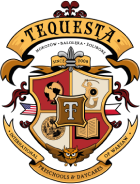The world our children are growing up in needs care for the planet more than ever. Although the term “zero waste”—a lifestyle that seeks to minimise the amount of waste we produce and throw away—often sounds like an advanced strategy for adults, the foundations of eco-friendly attitudes are best laid in the preschool years. When learnt early, caring for the environment feels natural rather than imposed. How can a child’s “green everyday life” look in practice? Here are some tried-and-tested ideas.
1. The Best Lesson Is a Good Example
Children learn mainly by observing. When they see a parent sorting rubbish, refilling a reusable bottle, or repairing a broken toy instead of buying a new one straight away, they treat such behaviour as obvious. Consistency is crucial: a single litter-picking walk is interesting, but repeated actions create a habit.
2. Less Waste at Home – Three Simple Tweaks
First, give things a second life. A shoe box painted together can become a doll’s house or a treasure chest.
Second, tame recycling. Colourful stickers with pictures of an apple core, a bottle, or a newspaper help even toddlers drop each item into the right bin without reading labels.
Third, shop consciously. Planning a list before leaving home and taking a small cotton bag—ideally with the child’s name on it—teach kids to avoid surplus food and single-use packaging.
3. The Eco-Minded Preschooler in Action
Start a micro-garden on the windowsill at home. Put the end of a lettuce in water and, after a few days, watch fresh leaves sprout—a quick lesson in resource cycles. Creativity also flourishes during DIY workshops: a toilet-roll tube turns into a pirate telescope, while a cardboard box becomes a car garage. At TEQUESTA we additionally appoint a “light guardian”—a child responsible for switching off the lights when the class leaves the room. The role boosts both responsibility and a sense of agency.
4. Learning Through Play
We weave environmental content into daily activities so they stay engaging. A favourite game is eco-memory: each pair of cards links a raw material with its typical waste item, so a child intuitively matches an apple core with “bio” and an empty bottle with “plastic.” Another idea is keeping a home tally of “waste points.” Set small goals—say, a day without plastic—and award a point for each success; when the target is reached, celebrate with a family picnic or a movie night. At preschool, the “Journey of a Bottle” puppet show is a hit: puppets made from caps recount their life cycle from production to recycling. Fun like this makes ecology tangible rather than abstract.
5. When “Zero Waste” Becomes Too Much Pressure
Remember that zero waste is a direction, not a race. If your child occasionally wants a drink in a carton, treat it as a chance to discuss what can be done with the empty package. A healthy balance between education and the joy of childhood prevents guilt and instead sparks curiosity.
6. How We Do It at TEQUESTA
Every classroom has a recycling corner where children decide for themselves which bin is right for a paper scrap or a plastic cap. We regularly swap storybooks between groups, giving them a “second life” instead of buying new copies. Our menu is planned in a less-waste spirit, using entire seasonal vegetables—broccoli stalks become a creamy soup. In this way our pupils see that ecology is practical action, not just a slogan.
Children’s zero waste is, above all, the courage to ask questions and the joy of creating. When a preschooler reminds you to grab a shopping bag or proudly shows off a self-made cardboard toy, you know the first step toward environmental awareness has been taken. At TEQUESTA we believe that a Little Person who learns the power of small choices from an early age will grow into a responsible citizen of the world.


